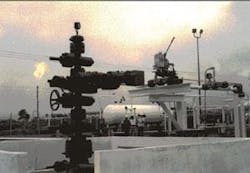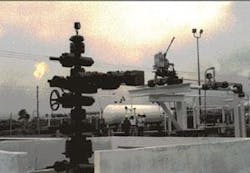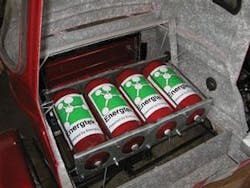SPECIAL REPORT: Nearly depleted Philippine gas well to provide small vehicle fuel
A company plans to extract the remaining gas from the nearly depleted San Antonio well in the Philippines for use in fueling small vehicles. Energtek Inc. recently signed a purchase contract with the Philippine National Oil Co. (PNOC) for the gas from the well, which is in the Philippine province of Isabela (Fig. 1).
The company will use its adsorbed natural gas (ANG) technology for filling the fuel cylinders for the vehicles.
Its initial plan calls for the gas to fuel 3,000 vehicles for 7 years, with the 3,000 vehicles converted by yearend 2009.
The company also plans to fulfill the government’s request to convert more than 500,000 three-wheel vehicles in the next 3-4 years.
Energtek says the Philippines has about 1.5 million three-wheel vehicles and the government has an initiative to ban these vehicles because of the pollution generated by their two-stroke engines.
It has operated sample converted vehicles, using gas from the San Antonio well, since July 2008.
Power plant supply
The San Antonio well has supplied gas to an electric power plant since 1994. Energtek says that the current low pressure in the well has led to the shut down of the power plant.
The company says that PNOC estimates that the well still can recovery about 1 bcf of gas. Energtek plans to use this remaining gas to initiate its plan for fueling two and three-wheel vehicles in the Philippines.
After completing a study of the reservoir, Energtec plans to install gas dehydration equipment and additional compression at the well site.
It also says that it is evaluating other Philippine stranded gas sources similar to the San Antonio well and the possibility of obtaining gas from the Malampaya gas pipeline, although stranded gas costs less than pipeline gas.
ANG technology
Energtek explains that its ANG technology increases storage capacity in cylinders. With the technology, a cylinder can hold a similar amount of compressed natural gas at 60 bar (870 psi) as a cylinder of the same size without the technology pressured to 200 bar (2,900 psi).
The ANG technology involves placing an adsorbent (activated carbon) in the cylinders.
Energtek explains that the surface area of the microporous adsorbent attracts methane molecules so that the molecules stick closer together, allowing the cylinder to hold more gas.
The lower pressure also allows for use of simpler compressors and welded, less costly cylinders, Energtek says. The company adds that refilling stations for these cylinders also require less capital investment because of the lower pressures involved.


